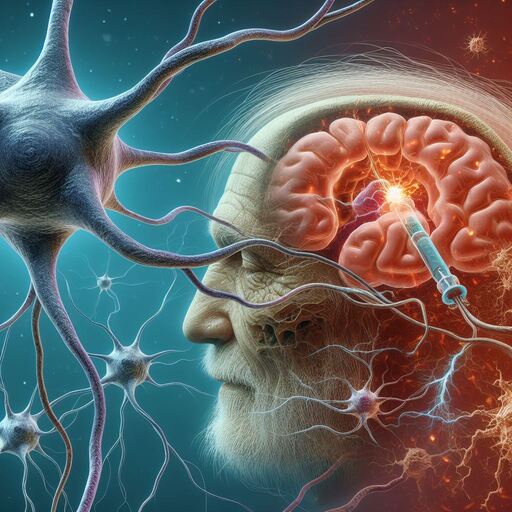Acetylcholine Receptors An Overview
Acetylcholine Receptors An Overview
Acetylcholine (ACh) is a neurotransmitter that plays an important role in synaptic transmission in the nervous system. It binds to specific receptor molecules on the surface of neurons, triggering various physiological responses such as muscle contraction and secretion of hormones and neurotransmitters. Acetylcholine receptors are classified into two main categories: nicotinic and muscarinic receptors.
Nicotinic Receptors
Nicotinic receptors are found on the axon terminals of motor neurons, where they bind to the neurotransmitter nicotine and trigger the release of acetylcholine. Nicotinic receptors are involved in the regulation of muscle tone, heart rate, and blood pressure. There are several subtypes of nicotinic receptors, including alpha1-, alpha3-, beta-, gamma- and delta-receptors. Alpha1-nicotinic receptors are found in smooth muscle cells, sympathetic ganglion neurons, and some neurons in the brain. They are responsible for muscle contraction and vasoconstriction. Beta-nicotinic receptors are also found in sympathetic ganglion neurons and some neurons in the brain. They are involved in the regulation of heart rate and blood pressure. Gamma-nicotinic receptors are found in some neurons in the brain, where they modulate the release of dopamine. Delta-nicotinic receptors are found in some neurons in the brain and spinal cord, where they regulate the release of norepinephrine.
Muscarinic Receptors
Muscarinic receptors are found on the axon terminals of sensory neurons and interneurons in the nervous system, where they bind to acetylcholine and trigger the release of other neurotransmitters such as glutamate or GABA. Muscarinic receptors are involved in a wide range of physiological processes such as learning and memory, mood regulation, and autonomic functions such as heart rate and blood pressure control. There are five subtypes of muscarinic receptors, including M1-, M3-, M4-, M5-, and cholinergic 5-HT1A receptors. M1-muscarinic receptors are found in the basal ganglia and hippocampus, where they play a role in memory formation and retrieval. M3-muscarinic receptors are found throughout the nervous system, including the brainstem, cerebellum, hippocampus, and other regions involved in attention, learning, and memory. M4-muscarinic receptors are found in some neurons in the brain, where they regulate the release of norepinephrine and dopamine. Cholinergic 5-HT1A receptors are found in the raphe nuclei in the brainstem, where they modulate serotonin release and play a role in mood regulation.
Acetylcholine Receptors An Overview
Acetylcholine receptors can be activated by drugs such as acetylcholinesterase inhibitors (such as donepezil), which increase the levels of acetylcholine in the brain. Cholinergic agonists (such as pilocarpine) can also activate muscarinic receptors and cause increased heart rate, sweating, and bronchodilation.
In conclusion, acetylcholine receptors play a crucial role in synaptic transmission in the nervous system. They are involved in various physiological processes such as muscle contraction, secretion of hormones and neurotransmitters, learning and memory, mood regulation, and autonomic functions such as heart rate and blood pressure control. Understanding the role of acetylcholine receptors is essential for developing new treatments for neurological disorders such as Alzheimer’s disease, Parkinson’s disease, and depression.
Acetylcholine Receptors An Overview

